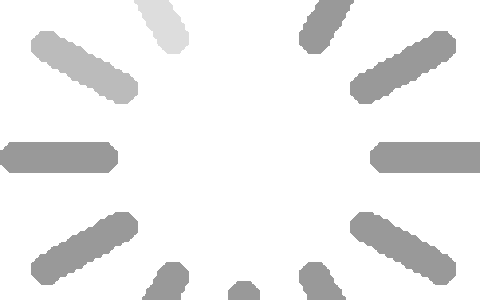Empirical analysis of digital gene expression data in R
安装:
source(“http://bioconductor.org/biocLite.R”)
biocLite(“edgeR”)
加载:
library(edgeR)
calcNormFactors():
用法calcNormFactors(object, method=c(“TMM”,”RLE”,”upperquartile”), refColumn = NULL, logratioTrim = .3, sumTrim = 0.05, doWeighting=TRUE, Acutoff=-1e10, p=0.75)
参数:object
either a matrix of raw (read) counts or a DGEList object
无论是原料(只读)计数matrix或DGEList对象
参数:method
method to use to calculate the scale factors
使用的方法计算规模因素
参数:refColumn
column to use as reference, only used when method=”TMM”
列作为参考使用,仅用于method=”TMM”
参数:logratioTrim
amount of trim to use on log-ratios (“M” values), only used when method=”TMM”
适量修剪使用log比率(“M”的值),只用时method=”TMM”
参数:sumTrim
amount of trim to use on the combined absolute levels (“A” values), only used when method=”TMM”
修剪量使用上的合并(“A”的值)的绝对水平,只用时method=”TMM”
参数:doWeighting
logical, whether to compute (asymptotic binomial precision) weights, only used when method=”TMM”
逻辑,是否计算(渐近二项式精度)的重量,只用时method=”TMM”
参数:Acutoff
cutoff on “A” values to use before trimming, only used when method=”TMM”
截止上“A”的值,使用前修剪,只用时method=”TMM”
参数:p
percentile (between 0 and 1) used to compute scale factors from, only used when method=”upperquartile”
百分(0和1之间),用于计算规模因素,只用时method=”upperquartile”
原始R代码:
## —-globalOptions, include=FALSE—————————————-
# comment / uncomment to show / hide R code
knitr::opts_chunk$set(echo = TRUE)
## —-loadLib, results=’hide’, message=FALSE——————————
## Do Not Run
# how to install required packages?
# install.packages(c(“RColorBrewer”,”mixOmics”))
# source(“http://bioconductor.org/biocLite.R”)
# biocLite(“edgeR”)
## End DNR
library(edgeR)
library(limma)
library(RColorBrewer)
library(mixOmics)
library(VennDiagram)
library(HTSFilter)
## —-importData———————————————————-
rawCountTable <- read.table(“countData.txt”, header=TRUE, sep=”\t”, row.names=1)
sampleInfo <- read.table(“design.csv”, header=TRUE, sep=”,”, row.names=1)
## —-checkData———————————————————–
head(rawCountTable)
nrow(rawCountTable)
## —-checkDesign———————————————————
head(sampleInfo)
sampleInfo$genotype <- as.factor(sampleInfo$genotype)
## —-DGEListCreation—————————————————–
dgeFull <- DGEList(rawCountTable, remove.zeros = TRUE)
dgeFull
## —-DGEListSamples——————————————————
dgeFull$samples$condition <- relevel(sampleInfo$condition, ref = “WT”)
dgeFull$samples$genotype <- sampleInfo$genotype
dgeFull
## —-pseudoCounts——————————————————–
pseudoCounts <- log2(dgeFull$counts + 1)
head(pseudoCounts)
## —-histoPseudoCounts—————————————————
hist(pseudoCounts[ ,”Cond.WT.Rep.1″], main = “”, xlab = “counts”)
## —-boxplotPseudoCounts————————————————-
par(mar = c(8,4,1,2))
boxplot(pseudoCounts, col = “gray”, las = 3, cex.names = 1)
## —-maPlotPseudoCounts, fig.width=10————————————
limma::plotMA(pseudoCounts[ ,1:2], xlab = “M”, ylab = “A”, main = “”)
abline(h = 0, col = “red”)
## —-MDSPseudoCounts—————————————————–
colConditions <- brewer.pal(3, “Set2”)
colConditions <- colConditions[match(sampleInfo$condition,
levels(sampleInfo$condition))]
pchGenotypes <- c(8, 15, 16)[match(sampleInfo$genotype,
levels(sampleInfo$genotype))]
plotMDS(pseudoCounts, pch = pchGenotypes, col = colConditions)
legend(“topright”, lwd = 2, col = brewer.pal(3, “Set2”)[1:2],
legend = levels(sampleInfo$condition))
legend(“bottomright”, pch = c(8, 15, 16),
legend = levels(sampleInfo$genotype))
## —-cimPseudoCounts, fig.width=10, fig.height=10————————
sampleDists <- as.matrix(dist(t(pseudoCounts)))
sampleDists
cimColor <- colorRampPalette(rev(brewer.pal(9, “Reds”)))(16)
cim(sampleDists, color = cimColor, symkey = FALSE, row.cex = 0.7, col.cex = 0.7)
## —-estimateNormFactors————————————————-
dgeFull <- calcNormFactors(dgeFull, method=”TMM”)
dgeFull
## —-countsAfterNorm—————————————————–
head(dgeFull$counts)
## —-sampleInfoAfterNorm————————————————-
dgeFull$samples
## —-estimateNormCounts, fig.width=10, fig.height=10———————
normCounts <- cpm(dgeFull)
pseudoNormCounts <- cpm(dgeFull, log = TRUE, prior.count = 1)
par(mar = c(8,4,1,2))
boxplot(pseudoNormCounts, col = “gray”, las = 3, cex.names = 1)
## —-normMDS————————————————————-
plotMDS(pseudoNormCounts, pch = pchGenotypes, col = colConditions)
legend(“topright”, lwd = 2, col = brewer.pal(3, “Set2”)[1:2],
legend = levels(sampleInfo$condition))
legend(“bottomright”, pch = c(8, 15, 16),
legend = levels(sampleInfo$genotype))
## —-DGEListCreationG—————————————————-
dgeFull.group <- DGEList(rawCountTable, remove.zeros = TRUE,
group = dgeFull$samples$condition)
dgeFull.group$samples$norm.factors <- dgeFull$samples$norm.factors
dgeFull.group
## —-estimateDispersion, cache=TRUE————————————–
dgeFull.group <- estimateCommonDisp(dgeFull.group)
dgeFull.group <- estimateTagwiseDisp(dgeFull.group)
dgeFull.group
## —-plotBCV————————————————————-
plotBCV(dgeFull.group)
## —-fisherExact———————————————————
dgeExactTest <- exactTest(dgeFull.group)
dgeExactTest
## —-topTag————————————————————–
resExactTest <- topTags(dgeExactTest, n = nrow(dgeExactTest$table))
head(resExactTest$table)
## —-histPValExact, fig.width=10, fig.height=6—————————
par(mfrow = c(1,2))
hist(resExactTest$table$PValue, xlab = “p-value”, main = “raw p-values”)
hist(resExactTest$table$FDR, xlab = “p-value”, main = “adjusted p-values”)
## —-DEGExact————————————————————
selectedET <- resExactTest$table$FDR < 0.05 & abs(resExactTest$table$logFC) > 1
selectedET <- resExactTest$table[selectedET, ]
nrow(selectedET)
head(selectedET)
## —-UDregExact———————————————————-
selectedET$updown <- factor(ifelse(selectedET$logFC > 0, “up”, “down”))
head(selectedET)
## —-exportExact———————————————————
write.table(selectedET, file = “tomatoDEG.csv”, sep = “,”)
## —-designMatrix——————————————————–
design.matrix <- model.matrix(~ dgeFull$samples$condition +
dgeFull$samples$genotype)
design.matrix
## —-estimateDispersionGLM, cache=TRUE———————————–
dgeFull <- estimateDisp(dgeFull, design.matrix)
dgeFull
## —-plotBCVGLM———————————————————-
plotBCV(dgeFull)
## —-GLMfit————————————————————–
fit <- glmFit(dgeFull, design.matrix)
fit
## —-LRTtest————————————————————-
dgeLRTtest <- glmLRT(fit, coef = 2)
dgeLRTtest
## —-LRTtest2————————————————————
contrasts <- rep(0, ncol(design.matrix))
contrasts[3] <- 1
contrasts[4] <- -1
dgeLRTtest2 <- glmLRT(fit, contrast = contrasts)
dgeLRTtest2
## —-topTagsGLM———————————————————-
resLRT <- topTags(dgeLRTtest, n = nrow(dgeFull$counts))
head(resLRT$table)
## —-extractDEGGLM——————————————————-
selectedLRT <- resLRT$table$FDR < 0.05 & abs(resLRT$table$logFC) > 1
selectedLRT <- resLRT$table[selectedLRT, ]
nrow(selectedLRT)
head(selectedLRT)
## —-VennDiagram———————————————————
vd <- venn.diagram(x = list(“Exact test” = rownames(selectedET),
“GLM” = rownames(selectedLRT)),
fill = brewer.pal(3, “Set2”)[1:2], filename = NULL)
grid.draw(vd)
## —-filter, cache=TRUE————————————————–
dgeFilt <- HTSFilter(dgeFull)$filteredData
dgeFilt
## —-GLMfilt————————————————————-
fit <- glmFit(dgeFilt, design.matrix)
dgeLRTfilt <- glmLRT(fit, coef = 2)
resLRTfilt <- topTags(dgeLRTfilt, n = nrow(dgeFilt$counts))
selectedFilt <- resLRTfilt$table$FDR < 0.05 & abs(resLRTfilt$table$logFC) > 1
selectedFilt <- resLRTfilt$table[selectedFilt, ]
nrow(selectedFilt)
head(selectedFilt)
## —-VennDiagramFilt—————————————————–
vd <- venn.diagram(x = list(“No filtering” = rownames(selectedLRT),
“Filtering” = rownames(selectedFilt)),
fill = brewer.pal(3, “Set2”)[1:2], filename = NULL)
grid.draw(vd)
## —-MADEG—————————————————————
dgeFilt$samples$group <- dgeFilt$samples$condition
plotSmear(dgeFilt, de.tags = rownames(selectedFilt))
## —-volcanoPlot———————————————————
volcanoData <- cbind(resLRTfilt$table$logFC, -log10(resLRTfilt$table$FDR))
colnames(volcanoData) <- c(“logFC”, “negLogPval”)
DEGs <- resLRTfilt$table$FDR < 0.05 & abs(resLRTfilt$table$logFC) > 1
point.col <- ifelse(DEGs, “red”, “black”)
plot(volcanoData, pch = 16, col = point.col, cex = 0.5)
## —-selectDEHeatmap, fig.width=10, fig.height=10————————
selY <- cpm(dgeFilt, log = TRUE, prior.count = 1)
selY <- selY[match(rownames(selectedFilt), rownames(dgeFilt$counts)), ]
finalHM <- cim(t(selY), color = cimColor, symkey = FALSE, row.cex = 0.7,
col.cex = 0.7)
## —-plotDendoGenes, fig.width=10, fig.height=10————————-
plot(finalHM$ddc, leaflab=”none”)
abline(h=10, lwd=2, col=”pink”)
## —-cutDendoGenes——————————————————-
geneClust <- cutree(as.hclust(finalHM$ddc), h=10)
head(geneClust)
## —-nbClustGene———————————————————
length(unique(geneClust))
## —-geneClust1———————————————————-
names(which(geneClust == 1))
如若转载,请注明出处:https://www.ouq.net/edger.html

 微信打赏,为服务器增加50M流量
微信打赏,为服务器增加50M流量  支付宝打赏,为服务器增加50M流量
支付宝打赏,为服务器增加50M流量 